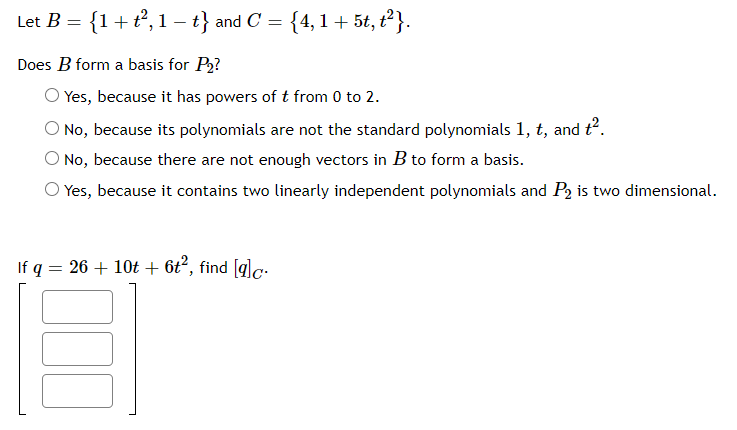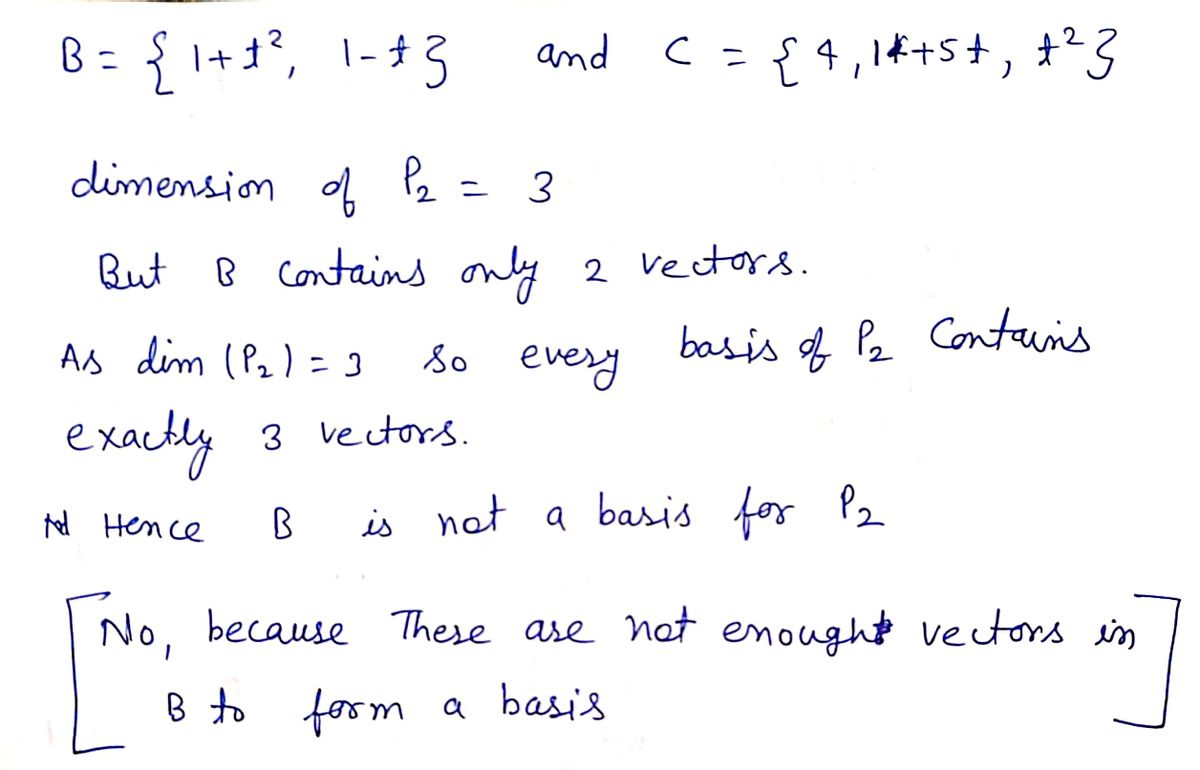Let B = {1+t,1 – t} and C = {4, 1 + 5t, t²}. Does B form a basis for P2?
Linear Algebra: A Modern Introduction
4th Edition
ISBN:9781285463247
Author:David Poole
Publisher:David Poole
Chapter6: Vector Spaces
Section6.6: The Matrix Of A Linear Transformation
Problem 38EQ
Related questions
Question
100%

Transcribed Image Text:Let B = {1+t, 1 – t} and C
= {4,1+ 5t, t?}.
Does B form a basis for P2?
Yes, because it has powers of t from 0 to 2.
No, because its polynomials are not the standard polynomials 1, t, and t.
No, because there are not enough vectors in B to form a basis.
O Yes, because it contains two linearly independent polynomials and P2 is two dimensional.
If q = 26 + 10t + 6t², find [glc.
Expert Solution
Step 1

Trending now
This is a popular solution!
Step by step
Solved in 2 steps with 2 images

Knowledge Booster
Learn more about
Need a deep-dive on the concept behind this application? Look no further. Learn more about this topic, advanced-math and related others by exploring similar questions and additional content below.Recommended textbooks for you

Linear Algebra: A Modern Introduction
Algebra
ISBN:
9781285463247
Author:
David Poole
Publisher:
Cengage Learning

Elementary Linear Algebra (MindTap Course List)
Algebra
ISBN:
9781305658004
Author:
Ron Larson
Publisher:
Cengage Learning

Linear Algebra: A Modern Introduction
Algebra
ISBN:
9781285463247
Author:
David Poole
Publisher:
Cengage Learning

Elementary Linear Algebra (MindTap Course List)
Algebra
ISBN:
9781305658004
Author:
Ron Larson
Publisher:
Cengage Learning